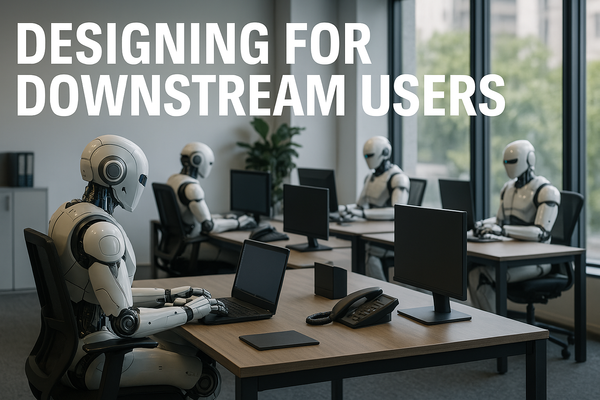Building AI-Specific Product Roadmaps—Addressing the Challenges of AI Lifecycle Management

When it comes to product roadmaps, most of us are used to thinking in linear terms. We develop features, launch them, and then move on to the next big thing. But with AI, the roadmap looks a little different. Unlike traditional software features, AI systems don’t just get built and forgotten. They evolve, requiring ongoing updates, monitoring, and even retraining. That’s why building an AI-specific product roadmap involves more than just delivering on business objectives—it’s about managing a continuously learning and evolving system.
In this post, we’ll explore how to craft a roadmap that acknowledges AI’s unique lifecycle, balances business and technical needs, and ensures long-term success. Let’s dive in.
Incorporating AI’s Unique Lifecycle into Your Roadmap
In the world of AI, nothing stays static. An AI model isn’t something you can simply “set and forget.” It needs regular maintenance, updates, and retraining to stay effective. This is one of the key challenges of AI lifecycle management—an AI system requires a continuous feedback loop, unlike most traditional features that work consistently once deployed.
Take Google Search as an example. The algorithms behind Google Search are updated regularly to ensure they return the most relevant results. These updates are driven by new data, user behavior, and shifts in the kinds of queries people ask. If Google left their search algorithm unchanged, it would quickly become outdated, failing to meet users' evolving needs.
Actionable Tip: When building your AI roadmap, account for ongoing iteration. Schedule regular model evaluations, retraining sessions, and updates based on new data. Your roadmap should include checkpoints not just for deployment, but for revisiting models to keep them accurate and effective.
Balancing Business Goals with Technical Constraints
One of the trickiest parts of managing an AI roadmap is aligning the fast-moving nature of AI development with fixed business goals. Traditional product development often follows a clear timeline, but AI requires more flexibility because models evolve as new data flows in and behaviors change.
Consider Netflix’s recommendation algorithm. When they initially launched, they couldn’t predict exactly how users would respond or how viewing patterns might change. To handle this, Netflix set clear business goals (increasing viewer engagement), but they left room in their roadmap for the algorithm to evolve based on data and feedback. This flexibility allowed the system to improve over time without disrupting their broader business objectives.
Actionable Tip: While setting business goals, such as user engagement or revenue targets, build flexibility into your AI roadmap. Allow for regular check-ins and be prepared to adjust timelines as your AI models evolve. Your technical team may need time to retrain models or adjust algorithms, so keep that in mind when setting KPIs.
Planning for Data Collection and Quality
At the heart of any successful AI project is good data. Without consistent, high-quality data, even the best AI models will fall short. Building an AI roadmap means planning not just for model development, but for ongoing data collection, cleansing, and management. This is especially important if your AI solution relies on real-time data, which can vary in quality and consistency.
For instance, Uber’s surge pricing system relies heavily on real-time data. The AI monitors supply and demand for rides, adjusting prices dynamically based on rider activity and driver availability. But this only works if Uber’s data is accurate and timely. If the data pipeline fails, the AI model can’t function properly.
Actionable Tip: As part of your AI roadmap, include a plan for how you’ll collect and manage data over time. Consider the quality of the data, how often it will be updated, and what happens if data is missing or inaccurate. Establish checkpoints to review data quality regularly and have backup plans in place for handling inconsistencies.
Prioritizing Maintenance and Model Updates
A common pitfall for AI projects is underestimating the importance of maintenance. Once a model is live, it doesn’t take long for it to become outdated—this is known as model drift. Model drift occurs when the AI’s predictions become less accurate over time due to changes in the data or the environment.
Take Amazon’s product recommendation engine, for example. Amazon’s recommendation system is constantly learning from user behavior, but it also needs regular adjustments to account for changes in shopping trends, product availability, and user preferences. Without ongoing updates, the recommendations would lose their relevance.
Actionable Tip: Include regular maintenance as a priority in your AI roadmap. Set intervals for model retraining and performance reviews. Also, plan for scenarios where you’ll need to adjust your AI model in response to changing data or customer needs. A roadmap without a maintenance plan is a recipe for outdated, ineffective AI.
Conclusion: Embracing the Evolving Nature of AI
Building an AI-specific product roadmap isn’t just about launching an AI feature—it’s about planning. AI models need to evolve, adapt, and improve over time, which means your roadmap must be flexible enough to handle this ongoing development. By incorporating model retraining, prioritizing data quality, and accounting for long-term maintenance, you can ensure that your AI initiatives not only meet today’s business goals but continue to deliver value in the future.
AI is powerful, but it’s also dynamic. The more you understand its unique lifecycle, the better you’ll be able to plan for long-term success. As you map out your AI journey, remember to give your models room to grow and improve, just like any other living system.
Next up, in the final post in this AI centric series, we’ll explore the nuances of managing AI roadmaps in fast-paced environments and how to stay agile in the face of rapidly changing data. Stay tuned!



